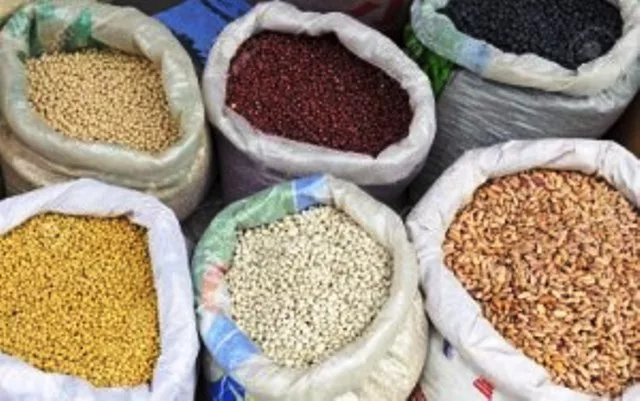Irish Potato Farming in Nigeria: Guide on How To Start (2025)
In this post, we will go through the step by step process on how to farm Irish potatoes in Nigeria.

Presently, Nigeria is the eighth largest producer of Irish potatoes in Africa and her yield is about 843,000 tonnes but her consumption of these potatoes in our dear country is over 1 million tonnes. This means that there is more to do in potato farming to meet the demands of the ever-increasing population of Nigeria.
Even if the available statistics gives actual figures, we should understand that in reality, the information provided above may be lower than the statistics if we take into cognisance the amount of Irish Potato tubers that spoil during the process of storage and transportation.
In addition, over 60,000 tonnes of this crop is exported every year and this further reduces the quantity of produce available to Nigerian consumers. With this, it is very obvious that the demand is for Irish potatoes in Nigeria far surpasses the supply when putting into consideration that over 500,000 households in Nigeria consume Irish potatoes.
Irish potatoes have interesting health benefits as the crop does not contain fat, cholesterol or sodium. It however, contains low calories which makes it a very healthy food to consume. This crop is rich in vitamin C, potassium, iron, vitamin B6 and fibre.
Health Benefits of Irish Potatoes
Some of the health benefits of Irish Potatoes are listed below:
1. Irish Potato fibres may help lower blood cholesterol levels.
2. Irish potatoes are a great source of potassium which also plays an important role in lowering blood pressure.
3. The vitamin B6 in Irish potatoes is very useful in maintaining brain and nervous system health.
4. Irish potatoes contain Vitamin Cook which is known for the prevention of common cold and scurvy.
In Nigeria, Irish potatoes thrive well in certain States of our federation and these states include Plateau, Kaduna, Kano and Katsina. The climate in the aforementioned States favours the cultivation of this crop.
Steps on How To Plant Irish Potatoes In Nigeria
Having said all that, let us now go into the details of cultivating Irish potatoes in Nigeria.
Step 1: Site Selection
You should consider carefully the site to pick in order for your crops to thrive. Irish Potatoes should be cultivated in an open area as with most other crops, this will allow it get adequate access to sunlight. Sunlight is very essential for plants to grow as it aids photosynthesis.
Any tree on the site that will prevent exposure to adequate sunlight should be cut down and removed. Ensure that the soil is fertile enough and well-drained. Your soil should have a pH range between 5.5 and 6.5.
Potatoes grow on a variety of soil types. To aid soil fertility, you are advised to apply organic manure to your soil.
The ideal land for potato farming should have been left unfarmed for at least 2 years. This helps to reduce the risk or incidence of disease infestation when you eventually start farming.
Step 2: Land Preparation
Land preparation involves the processes of clearing and getting the land ready for cultivation. Making of seed beds and fertilizer application is also necessary.
Step 3: Seed Selection
Seed selection is also very important. You need to get the best seeds in order to get a bountiful harvest. You should consider certain factors like disease resistance of the variety of seed to use for planting, time taken for the planted crops to mature, the yield as well as the overall quality of the potato produced.
Step 4: Planting
The Irish Potato planting season commences in March. The seeds are obtained by dividing the potato in to parts and planting these pieces. Each piece should be planted in a hole in a dry soil with a temperature of about 7C. Before you plant, you should allow a couple of days for the cut piece to form a protective layer around itself. This is important because this layer allows for moisture retention and helps to prevent rot.
The seeds are usually planted on ridges at about 15 cm from the surface of the top soil. However, this planting depth is dependent on the variety you are using.
An irrigation system should also be installed. Drip irrigation is the ideal irrigation method to be employed when cultivating potatoes. It helps to provide adequate moisture for the soil and the crop. It is also useful when applying nutrients in the correct quantities.
After planting, there are some very important post planting activities you need to carry out. For instance, watering is done at least once a week. After about 20 days, you’ll observe that the sprouting seedling has begun to grow leaves.
Also, you can apply inorganic fertilizers such as NPK to improve the quality of the soil nutrients and to enhance the growth of your crops. Additionally, you’d need to weed at intervals to ensure the plants are getting the appropriate amount of nutrients and moisture.
There are diseases that affect potatoes. These include black leg, bacterial soft rot, black scurf, potato blight and rhizoctonia. The variety of potato seeds planted is what determines disease resistance of your potato crop. You can also apply the appropriate treatment once you spot the signs of the disease.
Step 5: Harvesting
The maturity period of Irish potatoes is usually 2 to 3 months after planting. Once the foliage turns brown, it is a sign that harvesting should be started.
Harvesting is usually done when the soil is dry. During harvesting, gently dig up the potatoes from the soil so that you don’t bruise or damage the tubers. Make sure you brush off the dirt from the potatoes prior to storage.
After harvesting, your farm produce is ready to leave the farm for the markets and other distribution channels as soon as possible.
